(This article was updated on 4/17/2017 with new images)
Japan has a rich tradition of food carving called mukimono. If you’ve ever eaten at a fancy restaurant in Japan you might have found a carrot carved into a bunny, garnishing your plate. But in the hands of Japanese artist Gaku, the art of fruit and vegetable carving is elevated to a new realm of edible creations.
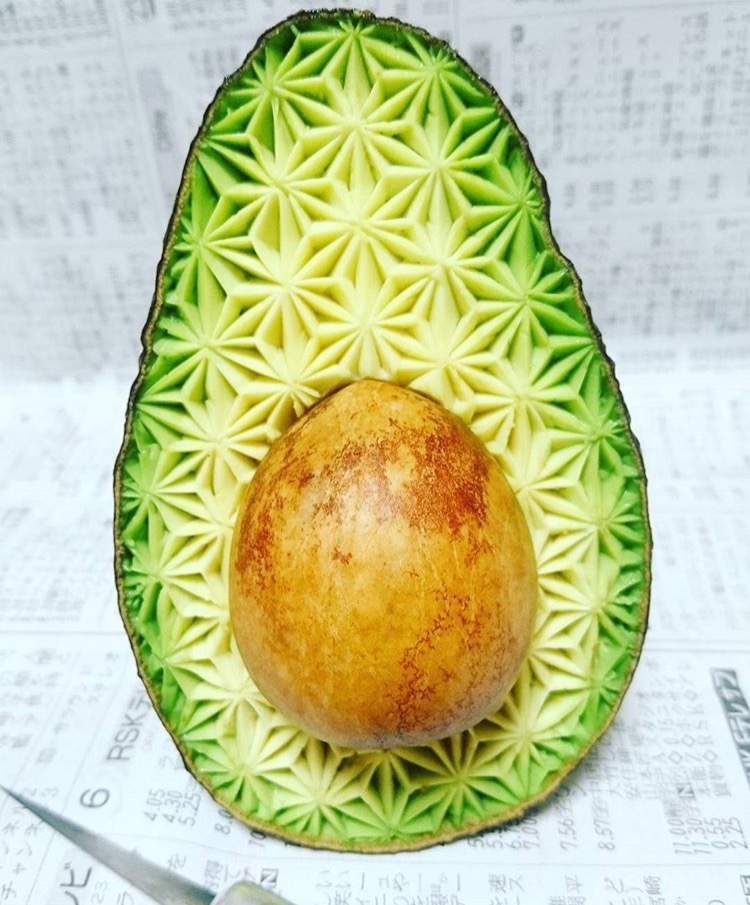
One constraint to carving fruits and vegetables is that sometimes you must work fast. The moment a peel is removed, oxidization will start to discolor your artwork. So, depending on the variety, Gaku’s carvings are probably created within several minutes. Armed with a tool similar to an x-acto knife and a fruit or vegetable from the grocery store, Gaku carves intricate patterns that are often inspired by traditional Japanese motifs.
Gaku points out that the banana is great fruit to practice with because it’s cheap and easy to carve. When asked what he does with all his creations after he’s done, his reply is simple: he eats them. “Except for the banana peel.”
You can see more of Gaku’s creations on his instagram account.
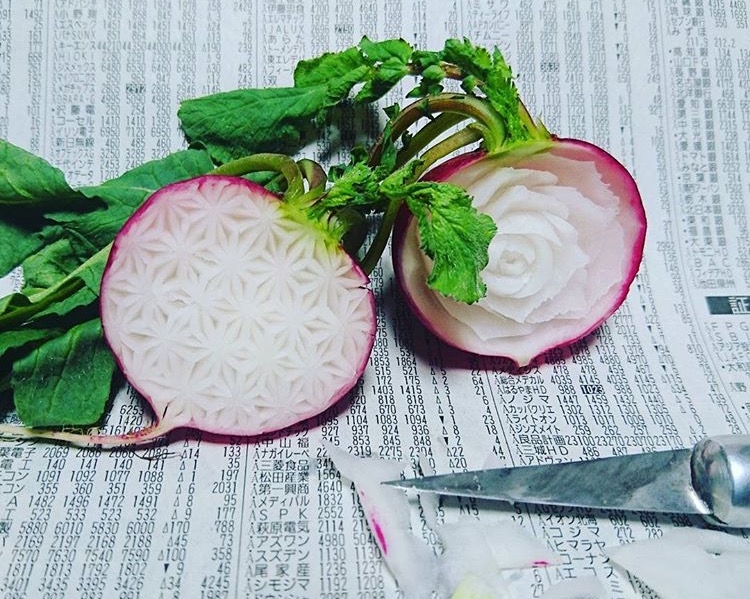
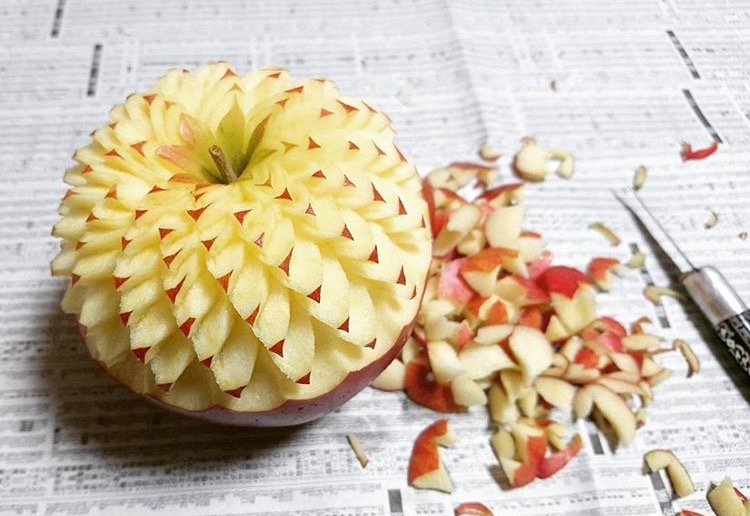
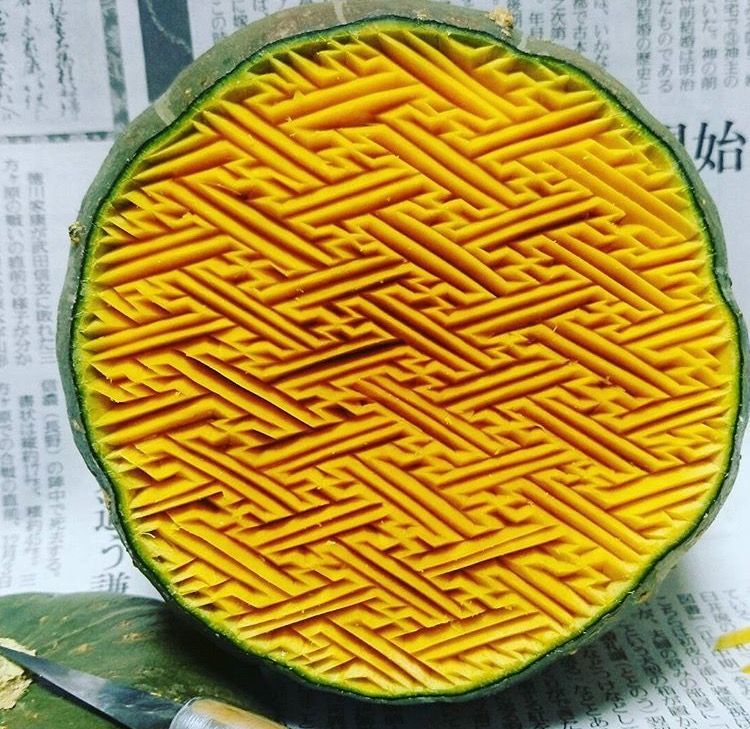



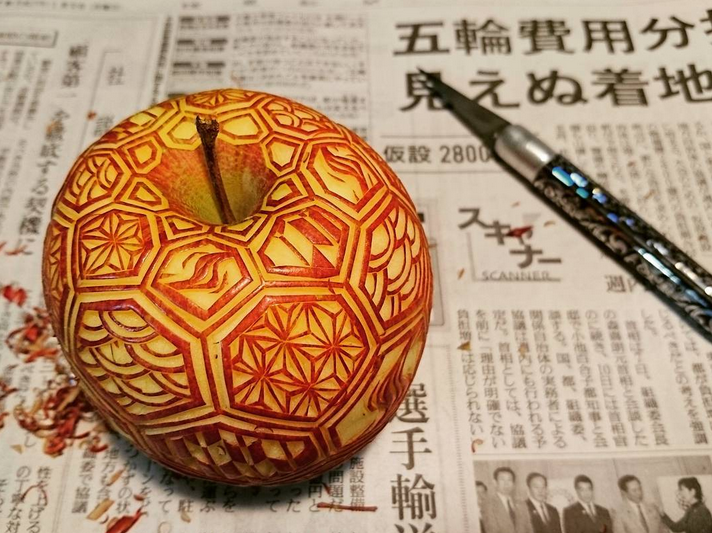
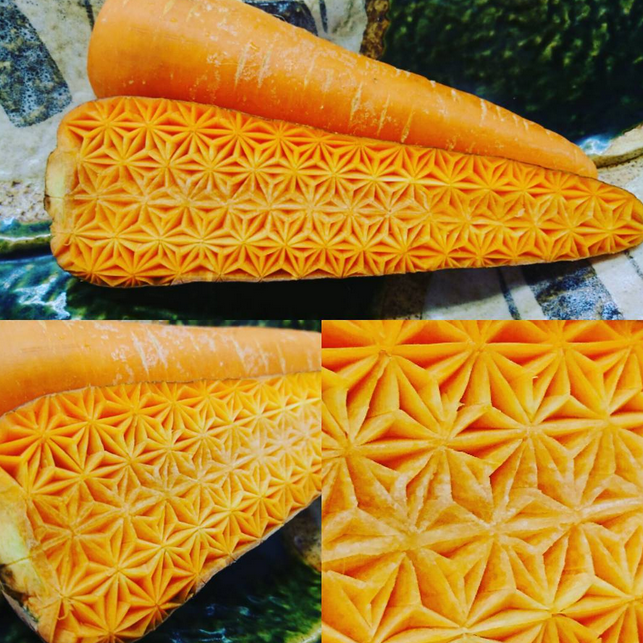
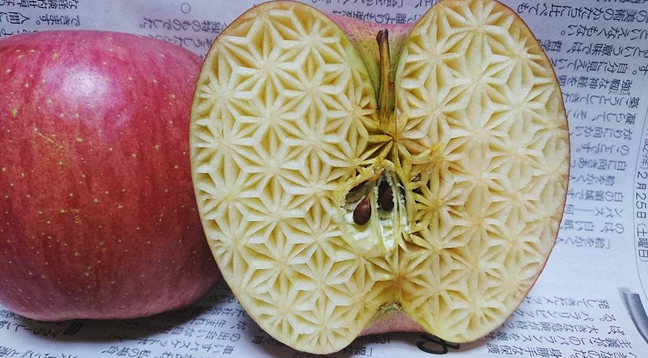
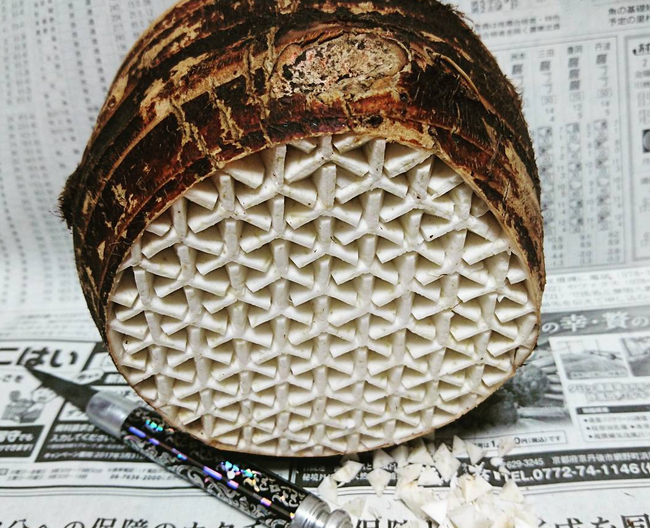
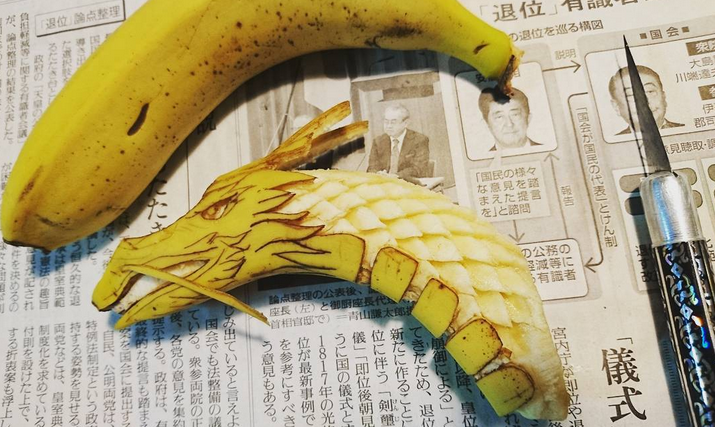




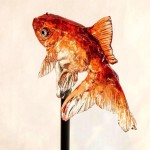


















March 4, 2017 at 6:00 pm
Superb!!! Is there a tool to create these architectural shapes? Thanks for sharing
March 5, 2017 at 12:41 pm
These are really good, but not permanent!
It would be saleable if they were carved from something sustainable, say balsa wood. They could then be painted (dyed) to reflect the real vegetable.
Just my £’s worth